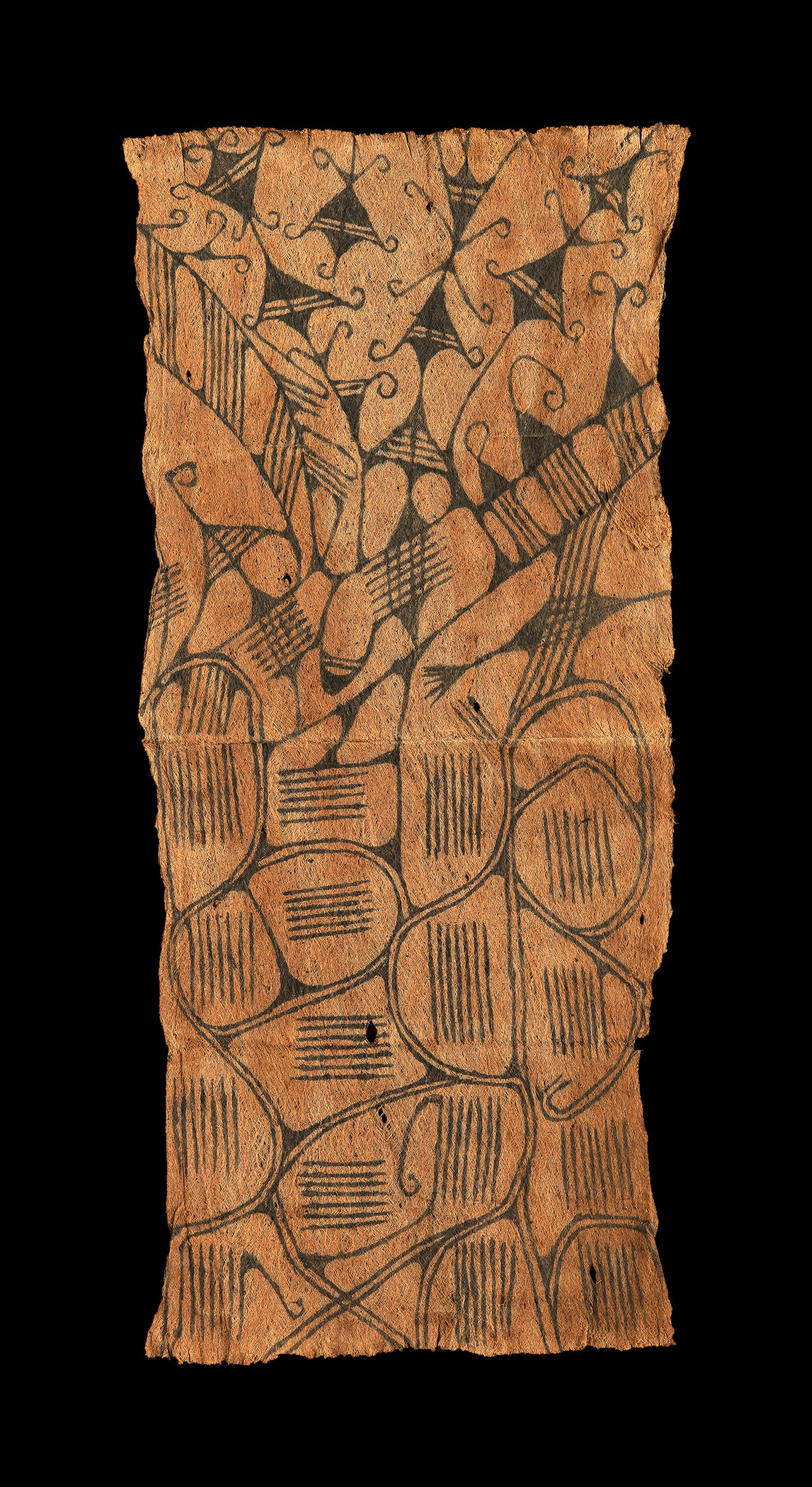The tropical rainforest located in the Ituri Province of northeastern Democratic Republic of the Congo has been inhabited by nomadic groups of people known as the Mbuti for over four thousand years. Accounts of their existence appear in documents of Egyptian pharaohs (c. 2250 BCE) who ordered expeditions to discover the source of the north-flowing Nile River, and in the Iliad, Homer’s ancient Greek epic poem (c. 1260–1180 BCE).
Utilizing the luxuriant vegetation of their environment, Mbuti men construct hunting implements and produce barkcloth, while Mbuti women erect hemispherical temporary shelters of saplings and leaves. The women also gather natural materials to extract colorants that are used to create paintings on barkcloth for ceremonial attire. The pattern-intensive barkcloth compositions are infused with spontaneity, movement, and expressive visual pulses influenced by the sights and sounds of the Ituri Forest.
.jpg)
To make barkcloth, men remove bark from trees that women have selected. After making two long horizontal slashes and one vertical cut on a tree, a man pulls the bark segment off the tree and places it in a river for a day to soften. Next, the outer stratum is stripped away and the fibrous inner cambium layer (bast) is harvested. Finally, each damp inner bark panel is pounded into a thin sheet of pliable barkcloth with an ivory or wooden mallet. The various species of trees chosen result in a range of natural barkcloth colors.
Mbuti women extract colorants from the bounties of the forest—fruit, flowers, leaves, wood, roots, and mud. Limited to the irregular boundaries of each unique barkcloth canvas, women apply the natural colorants with a twig, a stem, or a fingertip to create asymmetrical compositions where markings such as dots, lines, curves, and organic forms can repeat, meander, overlap, transition into another pattern (refered to as “break patterning”), or terminate at the edge of a voided space. This Mbuti art, with its aesthetics of asymmetry and visual dissonace, mimics the imagery of the rainforest and aligns with the syncopated polyphonic rhythms of Mbuti music. It has influenced the art of neighboring Central African cultures and shares striking affinities to Western modern and contemporary art.

Mbuti ceremonial barkcloth were first noted in the field by Western explorers, missionaries, and scientists in the late 19th century. During the first decades of the 20th century, European and American scientific expeditions gathered examples as anthropologic and ethnographic specimens; in the 1980s, European dealers of African art began to display Mbuti barkcloths in Brussels, Chicago, and Munich; and in the early 1990s, exhibitions were organized by the Barbier-Mueller Museum in Geneva and the Musée Dapper in Paris.
The majority of the 29 barkcloth paintings in this collection formed the core of the first major study of this rare artistic tradition. Mbuti Design: Paintings by Pygmy Women of the Ituri Forest (1995) was coauthored by Georges Meurant, a Belgian artist and African art scholar, and Robert Farris Thompson, an American writer, African art scholar, and professor of art history at Yale University. The authors examined Mbuti paintings that were collected between 1950 and the 1970s by anthropologists, ethnomusicologists, scientists, and others. The barkcloth paintings in this remarkable collection exemplify the diversity of technical and artistic styles that represent the aesthetics of women artists from one of the last remaining groups of hunter-foragers in the world.
During our 32nd annual Collectors Committee Weekend (April 20–21), members of LACMA's Collectors Committee generously helped the museum acquire 10 works of art spanning a breadth of eras and cultures. Check back later today to learn about another acquisition.



